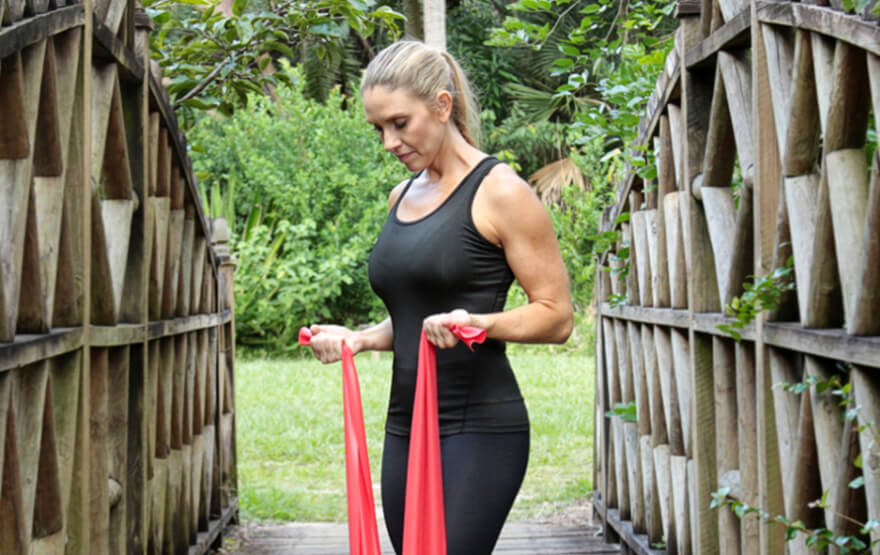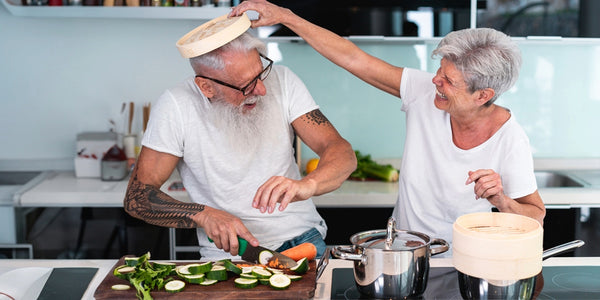Your Cart is Empty
Injury

Golfer's elbow, also known as medial epicondylitis, affects the muscles of the forearm that connect to the inside of the elbow. These inflamed and sore muscles are what help the wrist and fingers bend (flex). If you’re dealing with a case of golfer’s elbow, exercises are a great way to strengthen muscles, reduce pain and prevent symptoms. Since a sore elbow can limit more than just your golf swing, start these wrist and elbow exercises today.
Strengthening the wrist muscles has many benefits when dealing with golfer’s elbow. Firstly, extra blood flow to affected muscles will help with the healing process and decreasing elbow pain. Plus, they can help restore balance, reduce inflammation, and boost your confidence in your wrist. Knowing where to start and how much to do depends on the severity of your symptoms and how it feels when you try a specific move.
For a demonstration of each of the following exercises below, watch this video here
You should start with each of these wrist exercises without weight. Then, gradually build to weight with a dumbbell (1 lb.) or resistance band. This exercise specifically targets the muscles and tendons that are sore with golfer’s elbow.
This strengthening exercise addresses the muscles opposite of the sore wrist flexor muscles. It will help keep your wrist balanced. Plus, you will probably feel a gentle wrist flexor stretch, which is beneficial too.
An essential movement of the wrist is rotation, known as pronation and supination. This movement gives your wrist and hands a lot of versatility for daily tasks. These muscles can also get stiff and sore with golfer’s elbow, particularly the supinators.
The last essential direction that the wrist can move into is from side to side, known as radial and ulnar deviation. Specifically, radial deviation is an easy move that can be done to promote good overall wrist health and strength. This move is very small and subtle.
While the muscles that bend and straighten the elbow aren’t directly affected with golfer’s elbow, they connect to the elbow in very close proximity to the affected areas. Plus, they can get stiff and sore secondary to general inflammation in the elbow. Thus, some basic elbow exercises can be beneficial with your elbow rehabilitation.
The bicep muscles are a large muscle group that provides a lot of power and strength to the elbow and shoulder. Weakness or stiffness in the biceps can exacerbate forearm pain. A basic bicep curl can help.
The triceps also provide innate elbow stability that can affect overall function. Keeping these muscles in the back of the upper arm can also be beneficial for overall elbow health.
When it comes to optimal wrist, forearm, and elbow strengthening, having a few tools on hand can help boost your results.
Resistance bands are a versatile way to strengthen your arms. A lighter resistance is typically best for the wrist and forearm. Whereas, you will want medium to heavy bands for the elbows and shoulders. The most important concept with bands is understanding how to set up the angle of your band to correctly target each muscle group you want to address. A resistance band takes up little room and can even accompany you on a trip so that you don’t miss a strengthening day.
Choosing the Best Resistance Bands
A grip strengthening device can also improve the outcomes of your wrist, forearm, and elbow rehab program. There are a variety of options depending on your goals, preferences, and what muscles you want to primarily target. The most popular options include putty for its versatility or a simple gripping ball or pillow (aka a stress ball). Daily hand and wrist strengthening with these tools can be done anywhere and can help you feel your best.
Different Types of Grip Strengtheners
Light dumbbells (1-2 lbs.) or velcro wrist and ankle weights are great tools when your forearm muscles are able to tolerate more resistance. Since the forearm muscles are small, it’s important to keep the weight light. Always start with low weight for your forearm, you can always add more weight as you feel comfortable.
How golfer’s elbow affects your life will depend on the severity of your symptoms and what daily activities you normally participate in. While there are no hard rules on what to avoid, certain moves can certainly be more aggravating to the elbow. These rules generally apply to both golfer’s elbow and tennis elbow (also known as lateral epicondylitis). Exercises to consider avoiding include:
Now that you know what strengthening exercises can help elevate your elbow health, let’s review other ways to maximize your recovery process.
Pair your exercise program with other home treatment options to manage pain, inflammation, and proper healing
If you’re having trouble tolerating exercise, try using pain-relieving modalities before and after- such as ice, heat, massage, and electrical stimulation (TENs)
To maximize your strength program, focus on the eccentric or “lengthening” portion of each movement, as this had been found to help significantly with tendon healing
If you’re feeling unsure of where to start with your program or you’re not getting the results you expected, consider a round of physical therapy for a personalized treatment program
Golfer’s elbow can be well managed with a properly designed home exercise program. Finding the right balance of exercises can keep your muscles stay healthy and free of unnecessary strain. The most important part is getting started, and you will notice results with time. That way you can get back to your favorite activities like golfing.
If you notice a sudden change in the severity of your symptoms, they aren’t getting better within 1 to 2 weeks, or you notice a change in your quality of life, get in contact with a trusted healthcare professional, such as a physical therapist, immediately for further medical advice.
Sources:
https://bodyinbalance.com/1203/working-out-with-tennis-elbow/
https://www.ncbi.nlm.nih.gov/books/NBK507006/
https://myhealth.alberta.ca/Health/aftercareinformation/pages/conditions.aspx?hwid=av2582
SHOP Golfer's Elbow
![The Benefits of Flexibility [A.K.A. The Secret Sauce for Aging]](http://www.vivehealth.com/cdn/shop/articles/Smiling-retired-woman-listening-to-music-while-stretching-legs-outdoors._600x.jpg?v=1713090677)

